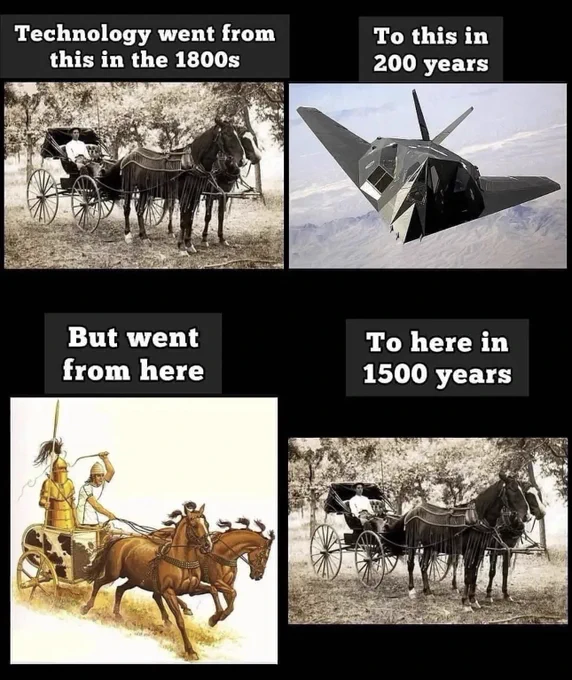A Comprehensive Guide to Artificial Intelligence (AI)

Throughout history, humans have been fascinated with the idea of creating intelligent machines that can function without human intervention. Surprisingly, even ancient civilizations like the Greeks pondered over the concept of intelligent machines. The roots of artificial intelligence (AI), as understood by the modern generation, offer a glimpse into the boundless potential of technological innovation. From the 1950s onwards, the rise of AI has been a compelling and dramatic journey, unlike any other technological advancement.
In this comprehensive guide, we will delve into the world of artificial intelligence, exploring its definition, working principles, components, relationship with machine learning, different AI variants, levels of intelligence, practical applications, advantages, and setbacks. Whether you’re a beginner or an enthusiast looking to deepen your understanding of AI, this guide aims to provide you with a comprehensive introduction to this fascinating field.
Definition of AI
1. The Meaning of AI
The concept of artificial intelligence can be confusing due to its various definitions. However, at its core, AI refers to the simulation of human intelligence in machines, especially computer systems. Put simply, it encompasses technologies that enable computers to perform tasks that typically require human intelligence.
AI’s scope is vast and encompasses tasks like language processing, visual perception, data analysis, video generation, answering questions, and much more. This wide range of applications has led to a tremendous surge of interest in AI’s potential in recent times.
2. Early Definition by Professor John McCarthy
The term “artificial intelligence” was formally introduced by Professor John McCarthy in 1955. He established AI as a field of study within computer science, with the primary objective of developing computer programs capable of problem-solving and achieving goals with human-like capabilities. McCarthy envisioned AI as a means of using language to create abstractions, solve human problems, and enhance the performance of computing systems.
Also, read – How AI (Artificial Intelligence) Will Change The Future Of Gaming
Working of Artificial Intelligence
*1. AI’s Hype and Its Various Components*
The increasing hype around AI has prompted companies to showcase AI applications in their products and services. However, it’s crucial to understand that many of these applications are actually leveraging a component of AI, such as machine learning. To comprehend the relationship between AI and machine learning, we must explore how AI works.
AI is a broad field of computer science, and machine learning is a subset of AI. AI systems require specialized software and hardware to create and train machine learning algorithms. Several programming languages, including Java, C++, Python, and R, are well-suited for working with AI.

*2. The Process of AI Systems*
The functioning of AI systems involves feeding them massive amounts of labeled training data. The AI then analyzes this data to identify patterns and correlations. These patterns are later used to make predictions about future states of the system.
For instance, AI-powered chatbots take text inputs and use them to learn how to interact with users as if they were another person. Similarly, image recognition tools exemplify AI applications by reviewing millions of examples to identify objects in images.
Components in AI Programming
AI’s ability to achieve human-like productivity for complex tasks depends on AI programming, which involves four cognitive skills: learning, reasoning, self-correction, and creativity.
*1. Learning:*
The first step in AI programming involves learning, which centers around data collection and defining rules to transform this data into actionable insights. These rules are known as algorithms, providing step-by-step instructions for specific tasks.
*2. Reasoning:*
The second step is reasoning, which allows AI systems to select the right algorithms for specific tasks, making them more adept at problem-solving.
*3. Self-Correction:*
AI systems continuously fine-tune their algorithms to improve accuracy, a process known as self-correction.
*4. Creativity:*
Creativity in AI programming relies on a combination of statistical methods, neural networks, rule-based systems, and other AI techniques. It enables AI systems to generate new text, music, images, videos, and ideas based on user inputs.
How is Machine Learning Related to AI?
*1. Differentiating AI, Machine Learning, and Deep Learning*
Many beginners often wonder if AI, machine learning, and deep learning are the same. While these terms are sometimes used interchangeably, they are distinct from each other.
– Artificial Intelligence: Refers to technologies that simulate human intelligence in computer systems.
– Machine Learning: A subset of AI, machine learning enables software applications to improve prediction accuracy without manual intervention or explicit programming. It uses historical data to predict new output values.
– Deep Learning: A subset of machine learning that models the structure of the human brain, using artificial neural networks for complex tasks.
How did it happen so fast? pic.twitter.com/eHjhuU6k0Z
— Shannen Michaela (@ShannenPill) July 18, 2023
Variants of Artificial Intelligence
Artificial intelligence is not a monolithic entity; rather, it comprises various types or variants, each with unique characteristics and capabilities. The three common variants are Narrow AI, Strong AI, and Super AI.
1. **Narrow AI:**
Also known as Weak AI, Narrow AI refers to systems that lack general cognitive abilities and can only perform specific tasks for which they have been trained or programmed. Examples include image recognition systems, AI chatbots, and speech recognition systems.
2. **Strong AI:**
Strong AI possesses more extensive cognitive abilities compared to Narrow AI. These systems are not confined to a specific domain and can perform tasks beyond the scope of Narrow AI. The programming of Strong AI aims to replicate the cognitive abilities of the human brain, even enabling autonomous solution discovery for unfamiliar tasks.
3. **Super AI:**
Super AI, or Artificial Super Intelligence (ASI), envisions AI applications that surpass human capabilities. These systems could predict the future, develop new scientific methods, and achieve tasks beyond human potential. As of now, Super AI remains a theoretical concept, but it promises groundbreaking advancements if realized.
Levels of Intelligence in AI Systems
AI systems can be categorized based on their level of intelligence, and each level represents a distinct stage of progression in AI’s abilities. The common AI types include Reactive Machines, Limited Memory, Theory of Mind, and Self-awareness.
1. **Reactive Machines:**
Reactive machines operate in a purely reactive manner, meaning they respond to specific tasks without any memory of past experiences. They rely on predefined instructions to carry out tasks. An example is IBM’s chess program, Deep Blue, which identifies pieces on a chessboard and makes predictions based on its current state.
2. **Limited Memory:**
Limited memory machines retain past experiences and use this historical data to make decisions about future actions. Self-driving cars are an example of limited memory AI, which employs data from past driving experiences to navigate roads safely.
3. **Theory of Mind:**
This type of AI seeks to introduce social intelligence, enabling machines to understand human intentions and predict behavior. Theory of Mind AI could have significant applications in human-machine interaction and collaboration.
4. **Self-awareness:**
At the highest level, AI systems could achieve self-awareness, allowing them to understand their internal state and deliver more accurate outputs. While this level remains speculative and futuristic, it represents the potential of AI to reach unprecedented levels of sophistication.
Examples of AI Applications
AI applications have permeated various industries and promise to revolutionize how we live and work. Some common examples include automation, machine learning, natural language processing, machine vision, and more.
1. **Automation:**
AI-powered automation, such as Robotic Process Automation (RPA), is used for streamlining and automating repetitive tasks in various industries. The combination of AI and RPA can significantly enhance efficiency and productivity in resource-intensive enterprise processes.
2. **Machine Vision:**
Machine vision, also known as computer vision, is an exciting AI application that involves capturing and analyzing visual information through cameras, signal conversion, and digital signal processing. It has applications in fields like facial recognition, object detection, and autonomous vehicles.
3. **Natural Language Processing (NLP):**
NLP is a critical area of AI that focuses on enabling computers to understand, interpret, and generate human language. Applications of NLP include sentiment analysis, speech recognition, language translation, and AI-based virtual assistants like Siri and Alexa.
**VIII. Advantages and Setbacks of AI**
*1. Advantages of AI:*
AI offers numerous advantages that have the potential to revolutionize industries and improve our lives:
– **Consistency:** AI systems can deliver consistent results without being affected by emotions or fatigue.
– **Time Efficiency:** AI can perform data-intensive tasks quickly, saving significant time and resources.
– **Personalization:** AI enables personalized customer service and recommendations based on user preferences and behavior.
– **Labor Savings:** By automating tasks, AI can save labor costs and free up human resources for more strategic roles.
– **Availability:** AI-based virtual agents can operate 24/7, ensuring continuous service and support.
*2. Setbacks and Challenges:*
While AI offers immense promise, there are also challenges and limitations to consider:
– **Cost:** Developing and implementing AI systems can be expensive, especially for smaller organizations.
– **Technical Expertise:** Building and maintaining AI applications requires specialized skills and knowledge.
– **Bias and Ethics:** AI systems can inherit biases from the data they are trained on, leading to potential ethical concerns.
– **Security Risks:** As AI applications become more prevalent, the risk of cyberattacks and data breaches increases.
Conclusion
In conclusion, artificial intelligence is a fascinating and promising technology that has captivated human imagination for centuries. From its origins in ancient civilizations to the formalization of the term by Professor John McCarthy in the 1950s, AI has come a long way and continues to evolve rapidly.
AI’s potential is vast, with applications ranging from mundane tasks to complex problem-solving. The different types of AI, such as Narrow AI, Strong AI, and Super AI, represent various stages of AI’s development and capabilities. From reactive machines to potentially self-aware systems, AI continues to push the boundaries of what is possible.
AI’s integration into various industries, such as automation, machine vision, and natural language processing, promises to transform the way we live and work. However, while AI offers many advantages, there are also challenges to address, including cost, bias, and ethical considerations.
As AI becomes a major technology trend for digital transformation, it presents exciting opportunities for individuals and organizations alike. Whether you want to adopt AI in your business or pursue a career in AI, there are numerous professional training courses available to help you explore the vast world of artificial intelligence.
In the coming years, AI will undoubtedly continue to shape the future of technology and human society. Embracing AI responsibly and harnessing its potential can lead to a more efficient, innovative, and interconnected world. So, let’s embark on this AI journey together, exploring its intricacies and unlocking the endless possibilities that lie ahead.





























































